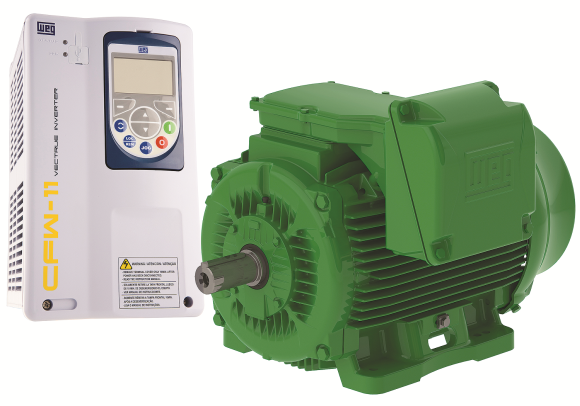

With electric motors consuming almost 70% of industry’s energy, companies are always looking for better motor efficiencies. For many years, motor efficiency has been well defined; however, when driven by a variable speed drive (VSD), the VSD efficiency and the combined efficiency of the VSD and motor have not been well understood. Choosing the right product combination can also be difficult as manufacturers’ data is not always easily comparable. This is where the international IEC61800-9 standard comes to the rescue, according to global motor and VSD manufacturer WEG.
The IEC61800-9 standard – based heavily on the previous EN 50598 standard – gives manufacturers a clear framework for grading a complete motor system. End-users can compare the overall efficiency of a manufacturer’s products, irrespective of design and component selection.
Switchgear + VSD + motor
The IEC61800-9 standard uses the extended product (EP) approach. This considers the efficiency of the motor system, which is comprised of the motor, the basic drive module (BDM), and the complete drive module (CDM). Together, these make up the power drives system (PDS), which also includes any switchgear and controls.
This terminology, while it sounds confusing, is just a technical way to say: switchgear + VSD + motor. The efficiency levels are defined by considering eight different operating points, covering low to high speed and torque. The user can easily compare his application load and speed requirements to the motor system defined speed and torque points.
The EP approach employs a semi-analytical model to calculate the efficiency of each of the components at the operating points of the driven equipment. The calculations are also based on tested and verified values. This results in the most efficient component selection for the application.
Using this standard, users may be assured that:
• A motor complies with the defined motor efficiency levels of IE1, IE2, IE3, IE4 or IE5.
• A VSD complies with VSD efficiency IE0, IE1 or IE2.
• The manufacturer’s motor and VSD used in combination will meet or exceed a system energy standard of IES0, IES1 or IES2.
Using this EP approach, the European Commission expects the increasing use of more efficient systems to help achieve its targets for carbon dioxide reduction. In line with these efforts, WEG VSDs and IE2 motors in combination achieve IES2. And significantly, WEG’s VSDs and IE3 efficient motors exceed the highest system levels of efficiency. Additionally, WEG has product lines that exceed even IES4 and IES5 classifications.
Reduced carbon emissions now a priority
Recognising that global population growth and economic development is driving up energy demand around the world, the European Union has set stringent targets to reduce carbon emissions. These aim to cut emissions by 40% by the year 2030. This means creating more renewable energy sources, and also increasing the energy efficiency of industrial systems. Studies suggest that almost half of global energy consumption comes from industry – followed by commercial and residential use.
The EC’s regulation 640/2009 already requires that all electric motors operated from a variable speed drive or inverter must adhere to a minimum of IE2 to be eligible for sale. Fixed-speed applications must meet a minimum of IE3 to comply.
Where a motor does not operate at its nominal torque and speed, the variable speed drive represents a significant opportunity for energy optimisation. In addition, the greater the range of speed variation results in a greater PDS efficiency. Using WEG’s IE2 motors with any WEG variable speed drive can achieve an efficiency classification of IES2. However, using other WEG lines of motors with the right drive, much better levels of efficiency can be reached.
WEG has a complete line of variable speed drives which exceed the IE2 requirements outlined in the IEC61800-9 standard. When combined with its robust and reliable motor line, the products create an integrated solution for all applications.

© Technews Publishing (Pty) Ltd | All Rights Reserved